Leica Monochrom Thoughts
by Ben Miller
Steve,
I recently attended a Leica Akademie Monochrom workshop in Chicago. My purpose of attending the workshop was to determine if I should upgrade to a Monochrom from my M9. I was curious to know if the extra tones from the Monochrom files would justify the upgrade. I was hoping that you would share my thoughts with others as they may be questioning this upgrade as well.
Here’s what I learned from the workshop:
Chasing after the extra tones from the Monochrom files may not be a good idea for me and here’s why. With the extra contrast that I add during post-processing I lose mid-tones. Some may say that I add to much contrast but it’s what I prefer. When I shot film I mainly shot HP5+ and would develop at home in my bathroom. I would lose mid-tones during scanning due to weaknesses inherent in the scanner that I used. The Epson V500 does an okay job when scanning medium format negatives but pretty much sucks when scanning 35mm. Next, I have a $300 laptop that is outdated. To really get the most from post-processing and to be able to view all the tones you should invest in a decent monitor. (I was told $1000 or so). It appears that I’ve never really experienced those great mid-tones from film due to my post-processing preferences, scanner, and crappy monitor. If I upgraded to a Monochrom I wouldn’t necessarily see those extra tones due to my on workflow. I can’t miss what I’ve never really had.
Now…… Here’s the good. When comparing the resolution of the files between an M9 and a Monochrom the Monochrom wins hands down. I’ve seen it with my own eyes. I like to shoot in the evening when out and about. The high ISO capabilities of the Monochrom would be nice.
I’ve now decided that a Monochrom wouldn’t be a good investment for me as I wouldn’t necessarily reap the benefits of the camera. My wife and checkbook are happy to know that my connection to my M9 is solid as the benefits of a Monochrom don’t fit my style.
Overall I’m extremely happy with the experience and would definitely attend the workshop again. The instructor was extremely knowledgeable and held my attention. Meeting everyone was great. I really hope that I can cross paths with these gentlemen and lady again as I consider all of them new friends. I also had the opportunity to spend a few hours out on the street with a Monochrom and a lens that I have never shot with before.
I’ve attached some of the photos that I captured with the loaner Monochrom. All photos were shot with a 35mm Summicron at F8 using zone focusing. I post processed the raw files in Lightroom 4.
You can view more of my photos on my website www.photographsbyben.com.
Cheers,
Ben

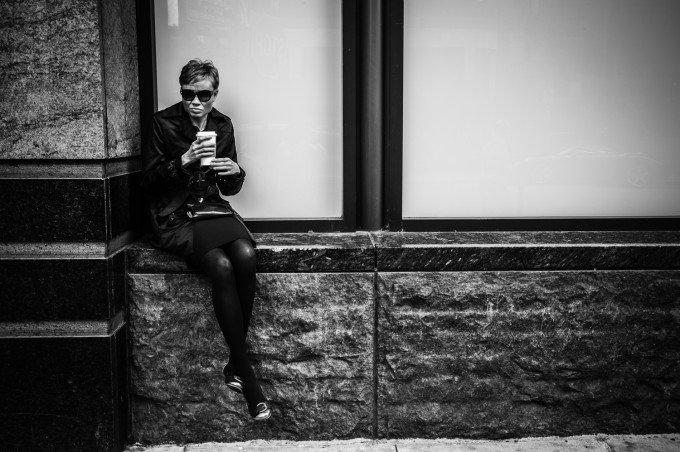
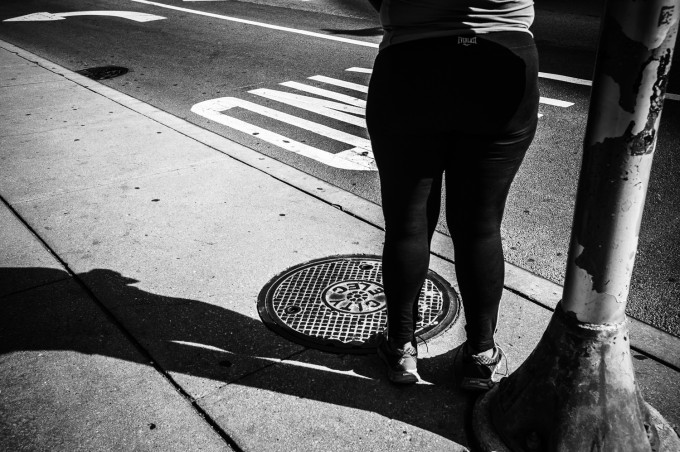
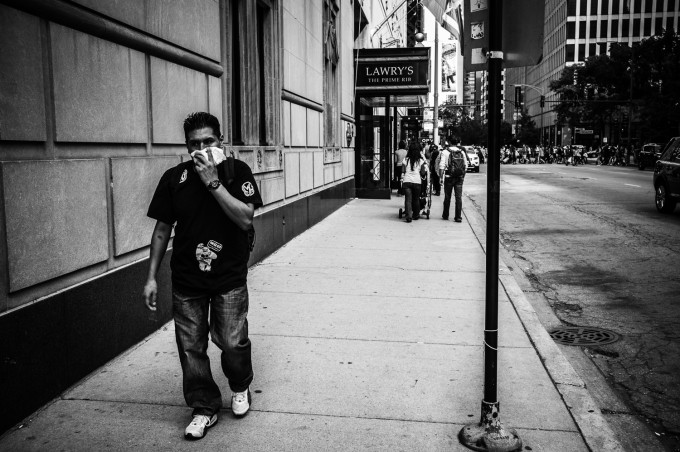
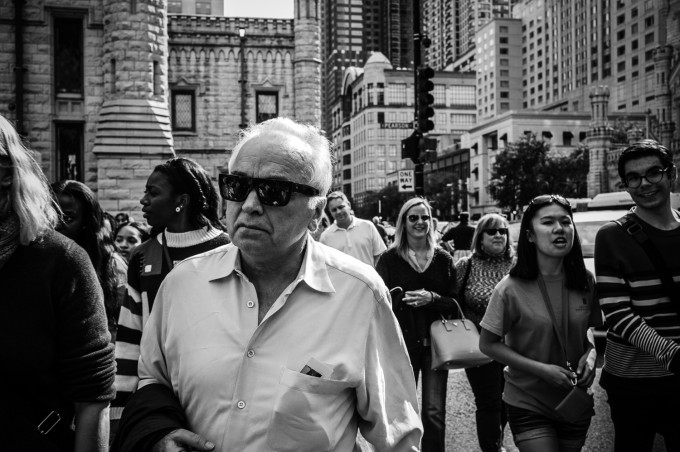
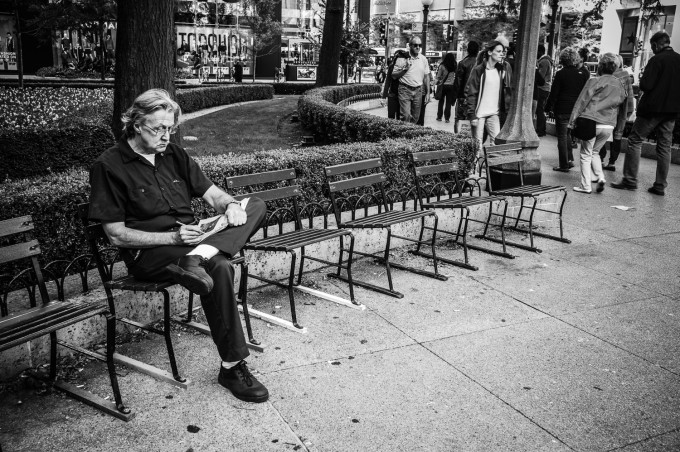
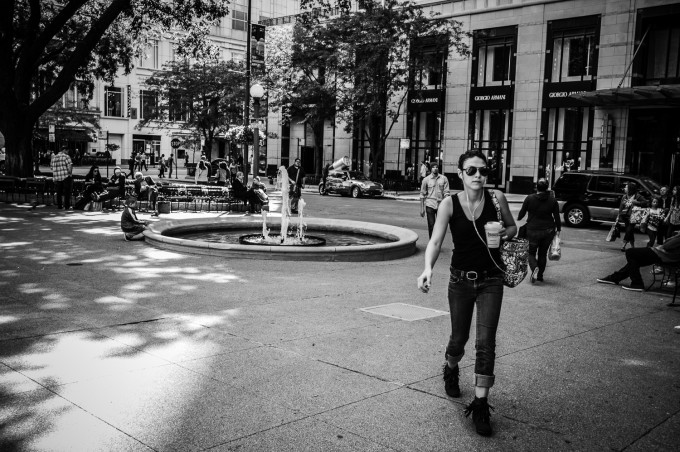

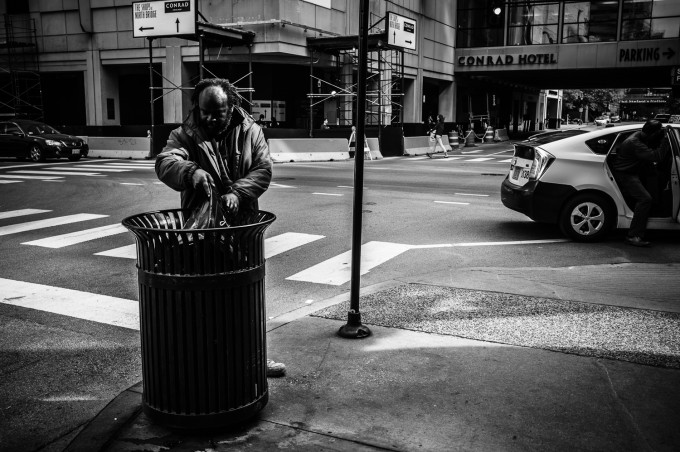
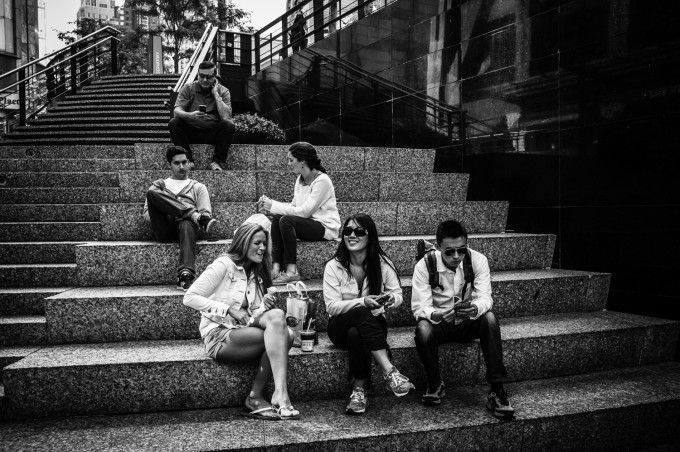
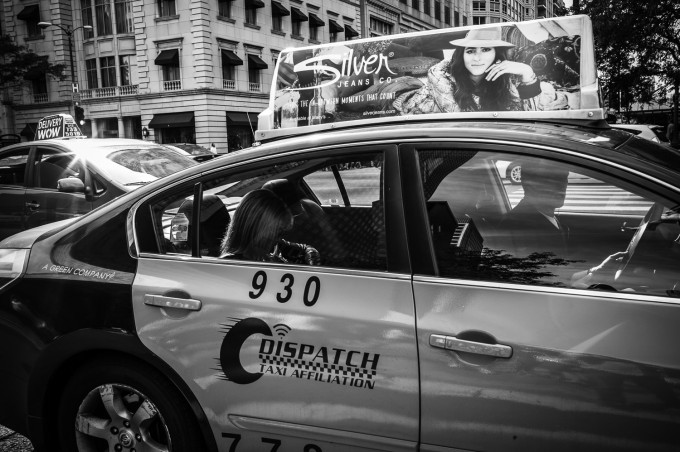


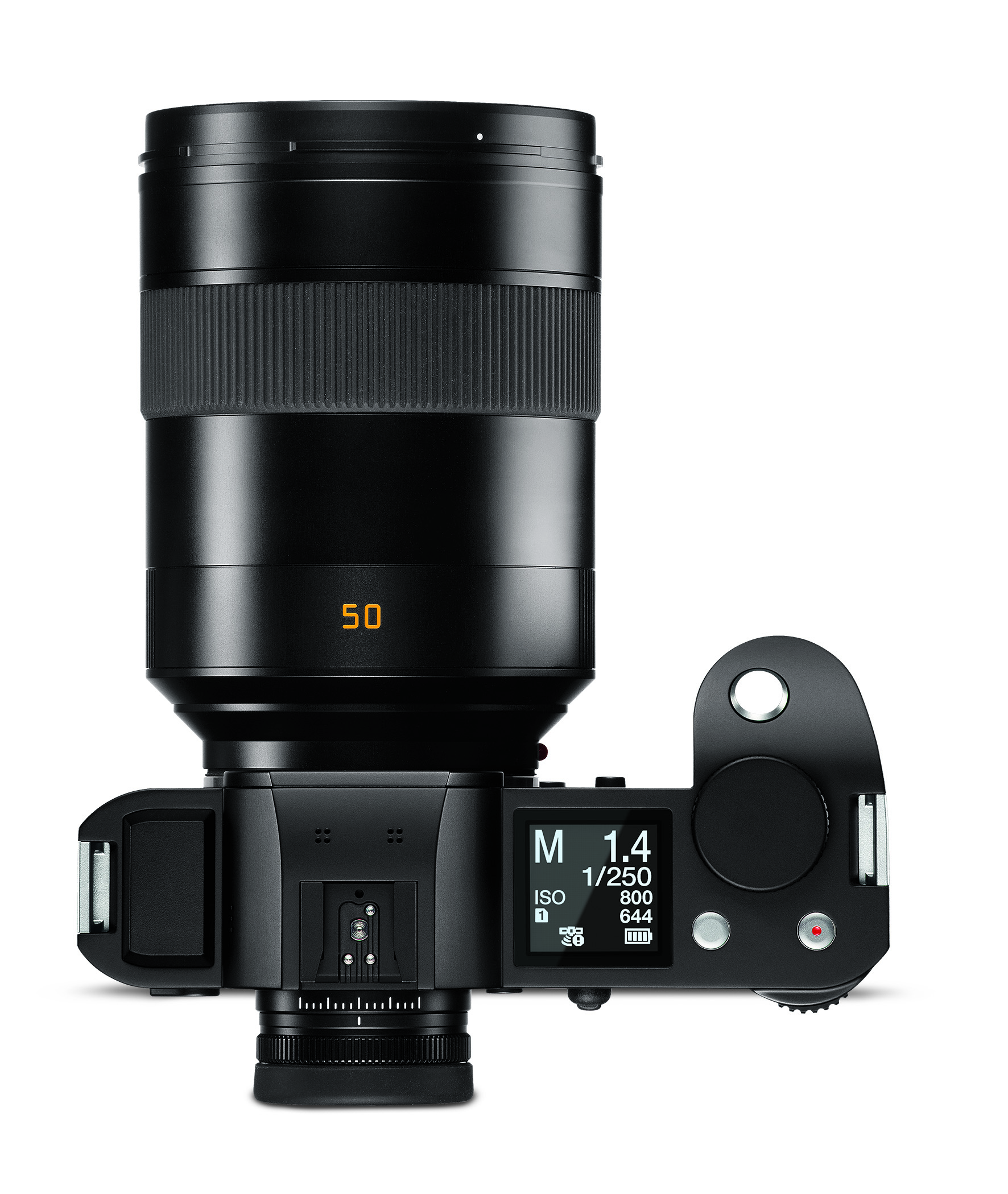
Why try to emulate B&W film, when you can actually use film. I know developing film is not as easy as digital production with software, but to me, it’s part of the fun if you want to shoot B&W.
Kenneth, thanks for the comment. I actually shoot film also. I really enjoy the process but my hectic life cuts into development and scanning times. As I write this post I’m thinking about several rolls of exposed HP5+ and FP4 that are waiting for my free time. Cheers.
Ben Miller has a good eye and I like the photographs. I think if he were willing to spend more time with it he’d find that the Monochrom can open up whole new creative opportunities. But he’s right that it’s not a camera for everyone. It’s not even necessarily the best camera for every devotee of B&W. The Monochrom is a tricky camera to master. You really need to use the right physical filter on your lens to get the best results in a given scene. It’s not at all like shooting with a color digital camera. I own a Monochrom and I love B&W photography, but I will occasionally shoot with my D800E and convert to monochrome in order to get the look that only finessing the B&W filters in Photoshop can give you. So the Monochrom is definitely a niche camera. But it’s a niche that the Monochrom fills better than anything else.
Thanks for the comment Doug. Cheers!
I have a Monochrom (which I heartily endorse and recommend), and I often times colorize my images in Adobe Lightroom–which I REALLY enjoy doing.
Because of this capability within Lightroom, I have no desire to buy a Leica that shoots color.
Ben,
Great post! Very informative and gives a different perspective.
BTW, the pictures are also fantastic!
Thanks Gage. I hope you are well and I think that your work is fantastic also. I visit your website regularly. Cheers my friend.
Thanks for the post Ben. I own the MM and just starting to think colour again after 4 months of shooting only B&W. I think it’ll be an ME or M9 to change over to regardless of ISO performance.
It really is a niche camera the MM and I’d encourage people to use and put anything else away for a month or so to see if it’s a keeper or not. I love it, but it’s more the fact it’s only black and white.
Nice work.
Andrew
Yes, that’s street photography. Sometimes binning 99 images and keep just that one really interesting image works better. Not sure about the heavy post processing either; ususally that covers up any outstanding quality the camera lens combination used might have.
What really puzzles me is why someone would invest in an M9 etc, and then use a 300 bucks laptop, with probably a coarse, non-colour calibrated screen, to process his pictures. Funny order of priority.
Ben, forget about another expensive camera or lens, it’s irrelevant; just use what you have. But do get a top quality laptop, 15″ screen at least (or a 27″ Mac desktop of course), the best Nvidia video card, ample processing power, get colour calibrating software, you’ll see the world change (for the better) right in front of your eyes; I know it did for me. Three years ago I got myself a Thinkpad W510, Spyder3 Pro calibrating software, and recently an up tp 12 MB RAM upgrade because of the D800’s file size.
Around 3000 bucks will see you through. Unless you make prints only (but you don’t). Unless you think that’s too expensive (in which case I’ll just chuckle).
Cheers, and enjoy your photography!
Michiel
Thanks for the comments. I am in the process of decided how to proceed regarding upgrading my computer set up. I have chosen to shoot with the M9 not because of the IQ but because I enjoy using a rangefinder. I really enjoy framing photos using a rangefinder as you can see whats outside or walking into the composition. I really starting getting more serious with photography when the Panasonic GF1 was released. I loved that camera and was happy with IQ. I still look at the files made with that camera and the 20mm f1.7 and smile.
I understand your reasoning Ben, but investing in at least a 15″ laptop with the specs I described will really be a giant step in enjoying your photography. Do it! OK; 2000 bucks will get you there. 15″, top quality Nvidia video card and at least 8 GB (not MB of course) RAM are what you’re looking for, and the colour calibrating software, which also makes an amazing difference.
Cheers,
Michiel
“..I really enjoy framing photos using a rangefinder as you can see whats outside or walking into the composition..”
Ben. you can do that with any camera: if you have two of them ..just open the other eye as well.
Thanks David. I agree. When shooting with my OM-D I do keep the other eye open. There’s something about a rangefinder that just feels right to me. Cheers.
David, you can’t blame a guy for preferring a rangefinder, but dropping 10k plus on a camera and lens(es), and then using a 300 dollar laptop to look at the imGes (gushing about the Leica glow etc) is decidedly odd.
Ben,
What lenses did you shoot the images with?
Thanks,
ACG
I borrowed at 35mm Summicron ASPH with the Monochrom. Thanks!
Seem*s that Olympus OMD is better, look Steve’s crazy comparison:
http://www.stevehuffphoto.com/2012/11/16/the-crazy-comparison-returns-the-999-olympus-om-d-vs-the-7995-leica-monochrom/
Olympus wins hands down here, what a great camera OMD is!
Pelle, I own an OM-D as well. I’ve printed large photos (20 x 30 inches) from the files with excellent results. I feel that all cameras available today have great image quality but the magic is really in the glass that you attach to it.
I was wondering if you had focus issues with the monochrome? I have 2 M 240’s and they both have focusing issues-in addition I have 4 friends with the same problem-I am anxiously awaiting the Nex-9 so I can use my Leica glass and not have these issues; dumping the M240;s.
I didn’t notice any focus shift but I was I was shooting at f8. Sorry Bob. I can’t help you with theis question. Thanks.
Focusing issues, Bob. Me too: trying a brand new M, the rangefinder showed perfect focus, but the add-on electronic finder (and rear screen) showed completely out of focus. So the rangefinder was out of adjustment.
But, of course, you don’t need to “dump” the camera(s) ..just have them adjusted by Leica, for free, under warranty. Send it (them) off, have normal return or rapid turnaround time, back they come ..as often as you like till they’re fixed and spot on. That’s part of what you pay for: it’s included in the price.
I have both the MM and the M and have zero focus– or any other problems– with either. They are brilliant tools. By the way, this thread exemplifies a pet peeve of mine, namely, judging cameras, lenses and images based on computer screens and internet images. I still maintain that one does not have something worthy of critical judgment until one prints the image and judges the results. In my experience, the incredible quality of these two cameras shows through in prints. And the MM, in particular is stunning.
I totally agree with you about judging by the print a photo produces, but it (I, you, ) over looks the reality of how photography has developed over the last 10 years, and how it’s used by the younger generation especially. They just don’t print. And don’t want to. No more 4×6 inch prints back from the Kodak Kiosk with your negatives. No shoe boxes full of printed photos, let alone large ones on the wall. Clouds for of old images. emails and facebook and whatever else is going on with low quality images. The old snapshot photographers of yesteryear. And then the rest of us who like to print. In my case, Epson photo printer with very expensive inks. Friends and family get these prints, so maybe that’s the only way to followup on the recommendation to judge by the prints: You print and give them away like I do. One noticeable exception, perhaps: the retina screen iPad and maybe iPhone 5 (though hard to see anything at that size). The iPad is being used for photo journal/magazine “printing” instead of paper. Check out the website for Lenswork, an all black and white photo publication. There may be a standardized b&w format and the same device, the retina screen which would be a viable substitute for large prints to evaluate photographs. What does everyone else think about this? I bought an iPad just for this purpose.
These pictures are great, but the first idea I had when looking at them is that you processed them to make them look like M9 bw conversions. If you’re going to make them look exactly like the M9 files that you’re used to the difference will be minimal indeed.
I find the Monochrom has the ability to make bw pictures look less digital than the M9, but that advantage gets lost when using the clarity slider. They still look better than M9 conversions but less so when upping clarity and contrast.
Besides half the enjoyment of the Monochrom is the workflow and ergonomics. 🙂 oh and you’re right about needing an excellent monitor, which I found out the hard way. I hated having to spend even more money after spending on the MM. Another thing I hate is the fact that sharing monochrom pictures online with friends sucks. Nobody seems to have the proper equipment to view my monochrom pictures with all its nuances. I feel like inviting my friends to see the pictures on my screen instead of their illconfigurated cheap screens. The difference is just soo big. With color pictures this is much less of an issue.
I agree ….
Using clarity results in a clinical look, even HDR situations …
The MM files more often benefit of NOT using the clarity slider
.
I didn’t adjust the clarity slider during PP. I typically don’t like it. On these files I adjusted the sliders for the blacks and the whites. Then I used highlight and shadow recovery if necessary. Thanks for the comments. I appreciate it. Cheers.
I double checked my lightroom settings for theses files and I was wrong on my previous comment. I did adjust the clarity slider. I wanted to come clean and let you know. 🙂
I don’t quite understand what you’re saying. From what you’ve concluded about the MM, it seems to me that you could not adequately use any digital camera properly or even scan film with low quality scanners and a low quality computer and esp. computer screen. The instructor was correct, you have to have a computer and monitor that allows you to see what the camera, lens, and sensor have obtained. Raw is just the starting point of this; photoshop is a must. So, that means that even a M9 wouldn’t work well either, because you’d have to convert those files to b&w too. What’s left would be pure film work, not scanned negatives, but a traditional chemical darkroom and printing process. No digital stage at all. That would be fine with me; supposedly b&w film photography is making a comeback. Finally, cost really is a big issue. If the MM were only $ 2,000 rather than $8,000, I probably would have one by now and even keep my M9 (I have the same problem that you have as well, to shift from M9 to MM or not.). But even for $ 2,000, I think I’d still have to upgrade my monitor to match the quality of the MM files. Yes, I’m married too. Very tolerant wife for many years, but growing increasingly impatient when she cannot see the difference any more per extra cost. So, you’ve touched on all the issues, and I agree with you. What always swings me back the other way–trading the M9 for MM at a loss–are the incredible images on GetDPI’s web site under Leica, fun with the MM. Many unbelievable b&w images that I don’t think I can produce with my M9, as good as the M9 b&w images are. So, constant dilemma, hampered by the high cost. Keep searching for an answer for us all.
Larry, I tried the MM before deciding to keep shooting with my M9 and whilst the MM was slightly better at first blush, with some modest adjustments made to the photo I had taken in Silver Efex Pro2, I was able to improve the tone, as well as, the quality of these photos where spending another eight thousand USD, just simply made little sense…for what was such a minimal difference to the quality of the photo.
With a Leica ‘glass’ I am convinced that neither the new M nor the MM are worth the cost.
And, for certain the unused and unwanted video component coupled with the heavier and larger M are never going to encourage me to purchase the new M.
I love my M9 and whilst I don’t know what Leica may offer in the future, I am quite pleased and honoured to keep what I have, as well as, my cash in the bank.
I have to say that I like what your PP does to the Mono files. Most shots from this camera I see online strike me as too dense in the mid-grays; they usually look a bit depressing to me — almost stifling. Yours have an openness — a breathing space in the midtones I like to see.
Just a personal opinion, no disrespect intended to those who enjoy the dense mids — à chacun son goût.
Thanks for the comment. Cheers!
In my opinion Mononochrom is definitely for the people who love b&w, they generally shoot in RAW and they do their own post processing using b&w emulation software. Using the Monochrom as such I can revive my favorite film emulsions on screen and on print, without the chemistry. In other words Monochrom is capable of giving somebody extremely sharp photos by just moving the clarity in LR to +70 for example and on the other hand to see the HP5 coming on your screen as in the old good days it was coming out of the developing tray on the print. If somebody is not interested in such a kind of b&w I think that the usual conversion techniques are more than adequate in order to get a very good monochrome result from the M9.
It is a matter of taste and choice. Therefore Ben if you do not feel for it do not do it.
You are the one who knows better.
Dimitris V. Georgopoulos
Photographer at Large
Athens, Greece
Indeed, I went through a similar questioning and decided to keep my beloved M9. And, I am pleased a made this decision.
I am interested in what other M9 owners have done and await their reply below…
Great post Ben–Thanks!!
Despite the “routine” scenery, your photos and processing really are great.
My question to you is this: do you think that (say, using the same lens and technique…) you would be able to replicate these photos on another camera? Maybe even your M9?
I appreciate your insights.
All the best,
M.
M., I like “routine”. Shooting people in Chicago is a treat for me as I live in a much more rural area. 🙂 My plan was to shoot with a 50 Summicron on both my M9 and an MM. On the way out to shoot the Leica rep asked me if I wanted to try any other lenses. I put a 35 Summicron on the MM and didn’t take it off. I enjoyed it so much that I only shot four frames on my M9. I really can’t answer whether or not I could match the M9 files to the MM’s using my processing workflow. I do feel that for me the extra magic from the MM isn’t worth the extra money. Cheers.
BTW. I like your website. I’ve added to my bookmarks. 🙂
Hey thanks Ben! I appreciate your comments and response.
And to clarify: there is nothing routine about your photos–I really enjoyed them!
Best regards,
M.
To be honest, these look like iPhone photos.. sorry but thats my opinion. .
Ouch!
just wondering, what you are trying to say? Is the IQ bad?
Where do I get an iPhone that can take a photo like the one of the taxi. I’ll buy it right away!
First of all: wonderful pictures!!
Second: My experience is, that the high dynamic range of top notch sensors, do not make much of a difference when the light/contrast of your subject is optimal. That means you have not much need for post processing. But, if you have high contrast, low light, wrong exposure or any other difficult light conditions, you may want to do heavy post processing, recover high light, low light and contrast, THEN the added tonal range of a good sensor matters. Even in your setting.
Third: You do not need a $1000 monitor.
You need indeed a monitor that has true color (24 bit) and can therefore be calibrated. The problem is that all laptops use 18 bit TN panels (except some old IBM Thinkpads and, of course, the Retina-MacBooks). Whats the difference between 18 and 24 bit? 18 bit (6 per channel) can display 262,144 colors. 24 bit (8 per channel) can display 16,777,216 colors. Thats 64 times more! All 18 bit TN panels EMULATE the 16+ millions of colors using dithering. Thats why these displays are so bad for photography.
You will find true color (24 bit) displays, mostly with IPS or PVA/MVA panels, from $300. So, there is no need to buy a high end display. Just add a simple calibrator (from $80 on ebay) and you will enjoy all the benefits of the MM or any other top camera.
By the way: any manufacturer (including Apple) who states, that his TN based monitors display true color (24 bit), do lie. They do emulate true color. Thats a big difference.
Thanks for the advice….. really good info. Cheers.
Loved your piece and the reasoning behind it. Really the “voice of reason” in today’s G.A.S. society!
Thanks Rich. I checked out your site and really enjoy your work. I really enjoyed reading your bio. Cheers.
Thanks for this. Your decision confirms why I’m keeping my M-E. I’d love a Monochrome, but can’t afford to keep both. So, though my post processing of B&W might not always be as aggressive as yours, I seem to have assumed correctly that the benefits of the Monochrome for me just might not warrant the price. Nice shots, by the way…
I like many of these compositions, but I have to join the crowd that he’s referring to, that prefers to see Leica Monochrom work in less contrast. The awesome dynamic range seems kind of wasted although, sure, contrasty photos can sometimes have their charm in a sense.
Ben,
These are really great photographs. I have a Monochrom and use it in much the same way although I shoot a lot of patterns and abstract work. For myself, I use a yellow filter as a start on almost all my photographs. This increases the contrast nicely and gives me a file which needs far less post processing. I get good contrast plus excellent mid-tones.
Really wonderful work. They evoke Chicago which I have visited many times.
Thank you for the comment Richard. I find it excited that with today’s technology we have a tool that is used in a classical way. The use of colored filters just adds to the creative process. I love using a Leica because I actually have to think before actuating the shutter. It makes me feel like a real photographer because I have to work for my capture. Cheers.